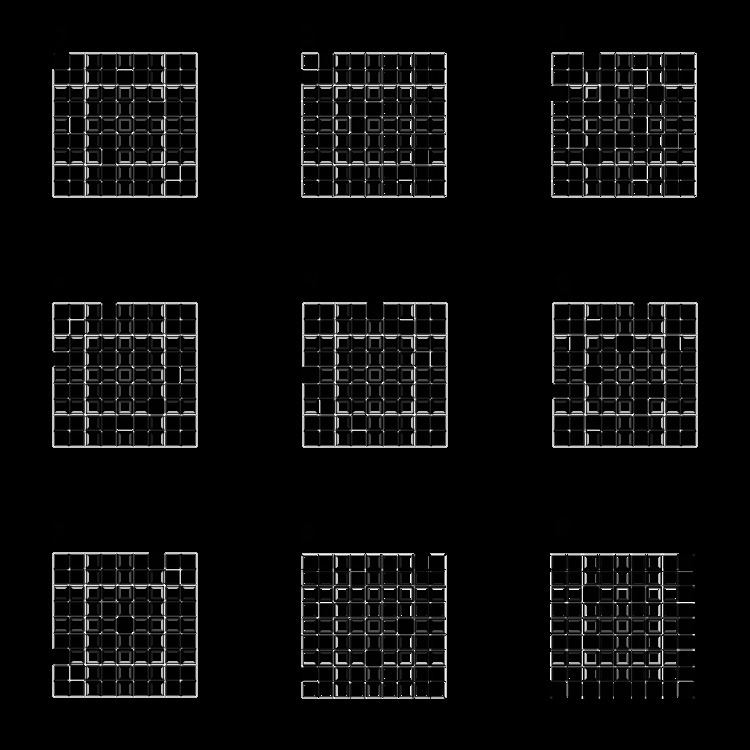 | ||
In Indian mathematics, a Vedic square is a variation on a typical 9 × 9 multiplication table where the entry in each cell is the digital root of the product of the column and row headings i.e. the remainder when the product of the row and column headings is divided by 9 (with remainder 0 represented by 9). Numerous geometric patterns and symmetries can be observed in a Vedic square some of which can be found in traditional Islamic art.
Contents
Algebraic Properties
The Vedic Square can be viewed as the multiplication table of the monoid
If
This does not form a group because not every non-zero element has a corresponding inverse element, for example
Properties of subsets
The subset
From two dimension to three dimension
Vedic cube is defined as the layout of each digital root in a three-dimensional multiplication table.
